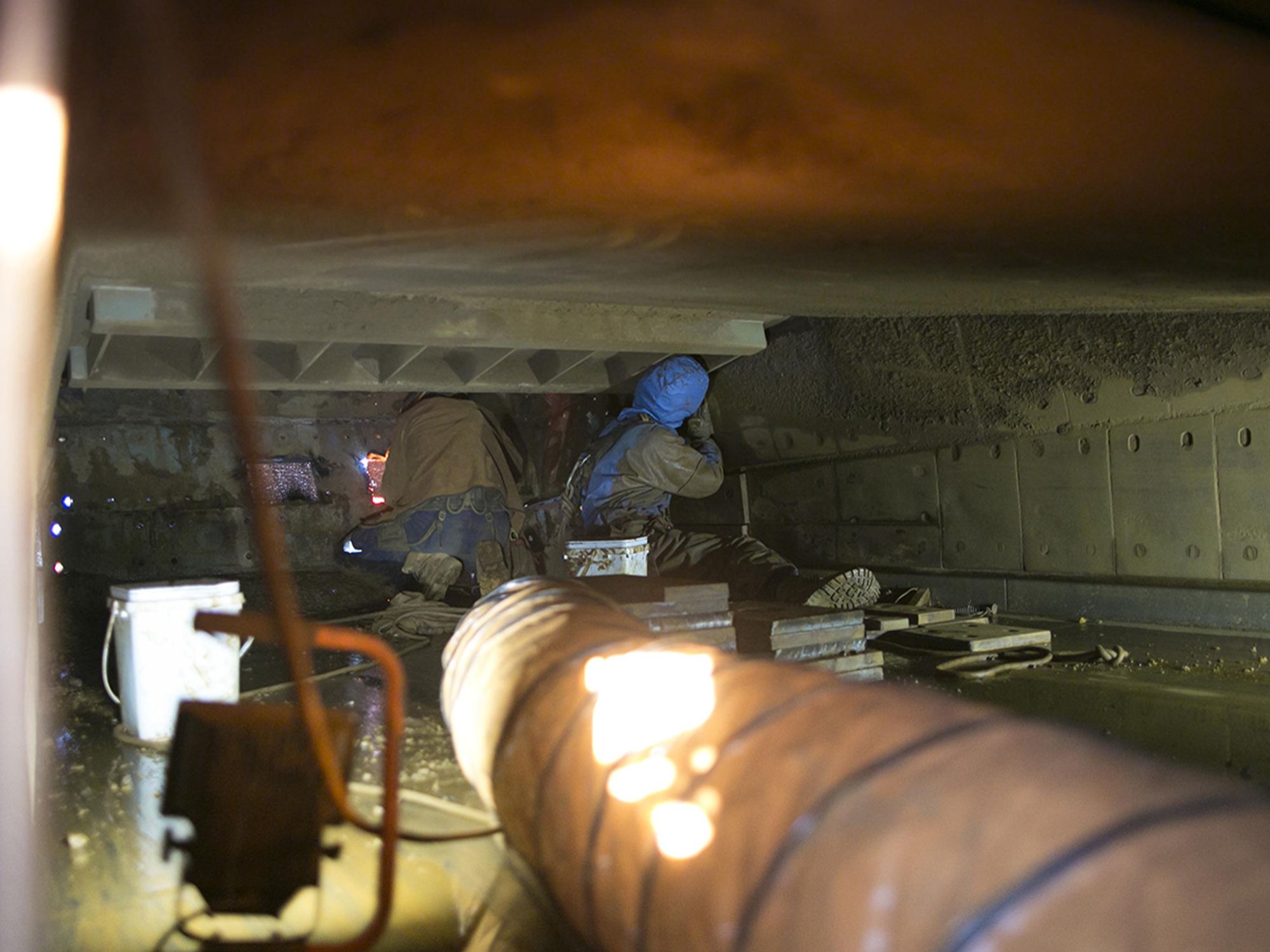Welding and cutting in confined spaces

- Welding, cutting, and brazing in confined spaces exposes workers to hazards including fire, explosion, damage to the nervous and respiratory systems, and asphyxiation.
- Atmospheric testing and monitoring is crucial because many toxins can’t be seen or smelled.
Working in confined spaces brings its own set of hazards, and performing hot work in these conditions compounds the danger. The two primary hazards of welding, cutting, or brazing in a confined space are flammable air and toxic air contaminants.
Flammable air
Fire and explosion are serious dangers in a confined space. Fumes and vapors will ignite more quickly in the trapped air. Flammable and combustible gases or vapors may be present from previous contents, tank coatings and preservatives, and welding gases.
In locations where flammable vapors may be present, precautions must be taken to prevent ignition by eliminating or controlling the source of ignition or eliminating the flammable air before working. Sources of ignition may include: smoking, cutting and welding, hot surfaces, and frictional heat.
Toxic air contaminants
Toxic air contaminants come from:
- Material previously stored in the confined space or as a result of the use of: coatings, cleaning solvents, or preservatives.
- Work that gives off a toxic gas, such as a welding operation that gives off carbon monoxide and oxides of nitrogen and ozone.
Toxic gases and vapors present two types of risk to people in a confined space:
- Irritating the respiratory or nervous system; and
- Cutting off the oxygen supply and getting into the lungs, causing asphyxiation.
Unfortunately, many toxic gases and vapors on the job cannot be smelled or seen. This means that atmospheric testing and monitoring is very important.
Generally, if a space has a hazardous atmosphere, the hazard must be eliminated or reduced by:
- Purging the hazardous atmosphere,
- Displacing the noncombustible gas,
- Flushing the hazardous atmosphere, and/or
- Ventilating with forced air.
If atmospheric hazards cannot be completely eliminated, workers must use appropriate respiratory protection and other personal protective equipment (PPE) as necessary.
